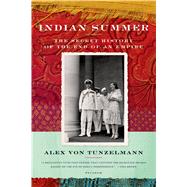
Note: Supplemental materials are not guaranteed with Rental or Used book purchases.
Purchase Benefits
What is included with this book?
Alex von Tunzelmann was educated at Oxford and lives in London. Indian Summer is her first book.
| A Tryst with Destiny | p. 3 |
| Empire | |
| In Their Gratitude Our Best Reward | p. 13 |
| Mohan and Jawahar | p. 24 |
| Civis Britannicus Sum | p. 43 |
| Dreaming of the East | p. 57 |
| Private Lives | p. 74 |
| We Want No Caesars | p. 87 |
| Power without Responsibility | p. 110 |
| A New Theater | p. 127 |
| Now or Never | p. 142 |
| The End | |
| Operation Madhouse | p. 167 |
| A Barrel of Gunpowder | p. 187 |
| Lightning Speed Is Much Too Slow | p. 203 |
| A Full Basket of Apples | p. 219 |
| A Rainbow in the Sky | p. 234 |
| The Beginning | |
| Paradise on Earth | p. 255 |
| The Battle for Delhi | p. 273 |
| Kashmir | p. 292 |
| Maybe Not Today, Maybe Not Tomorrow | p. 314 |
| Afterward | |
| A Kiss Good-bye | p. 343 |
| Echoes | p. 363 |
| A Note on Names | p. 381 |
| Glossary | p. 383 |
| Notes | p. 387 |
| Bibliography | p. 445 |
| Acknowledgments | p. 455 |
| Index | p. 457 |
| Table of Contents provided by Ingram. All Rights Reserved. |
The New copy of this book will include any supplemental materials advertised. Please check the title of the book to determine if it should include any access cards, study guides, lab manuals, CDs, etc.
The Used, Rental and eBook copies of this book are not guaranteed to include any supplemental materials. Typically, only the book itself is included. This is true even if the title states it includes any access cards, study guides, lab manuals, CDs, etc.
Excerpted from Indian Summer: The Secret History of the End of an Empire by Alex von Tunzelmann
All rights reserved by the original copyright owners. Excerpts are provided for display purposes only and may not be reproduced, reprinted or distributed without the written permission of the publisher.